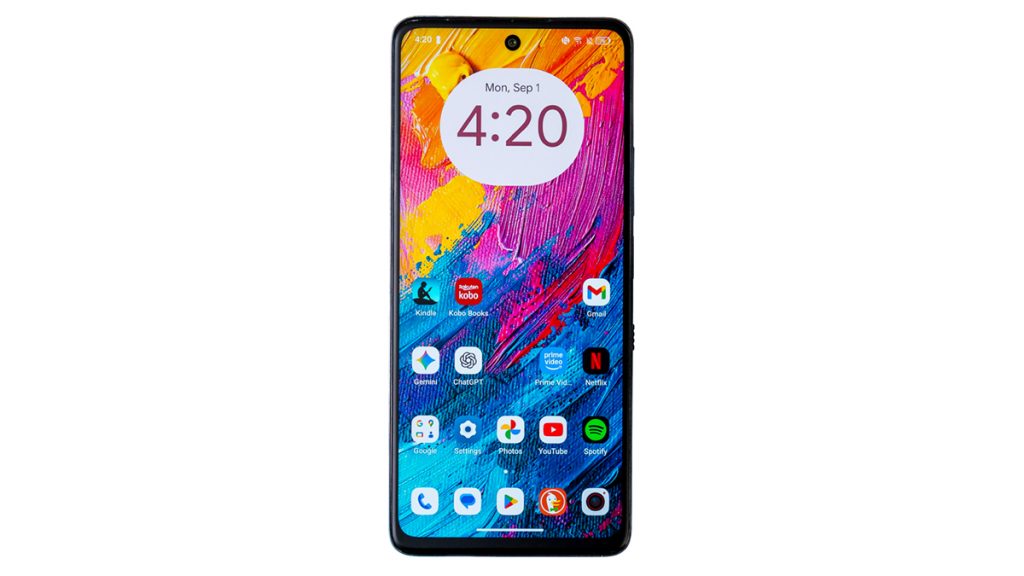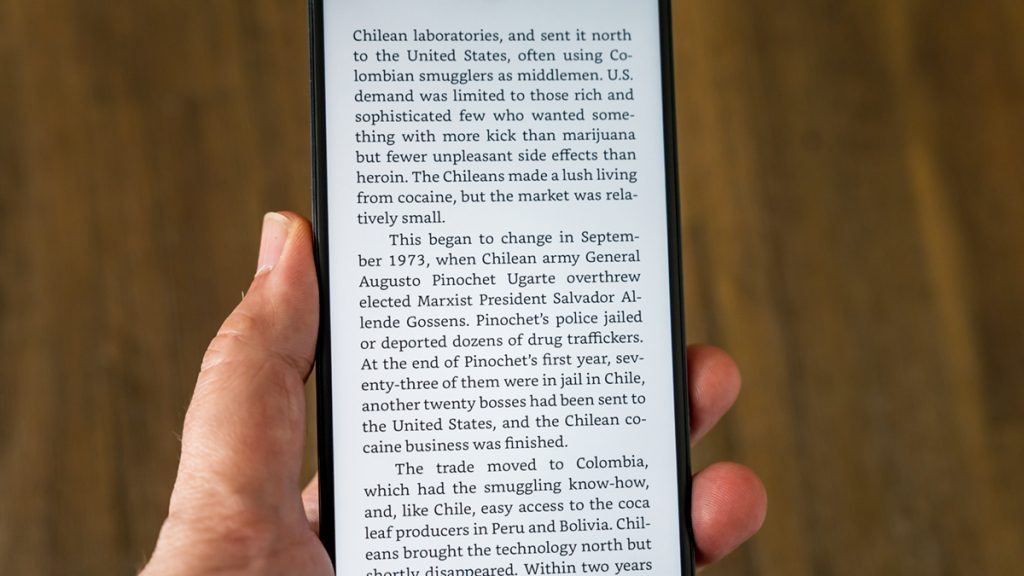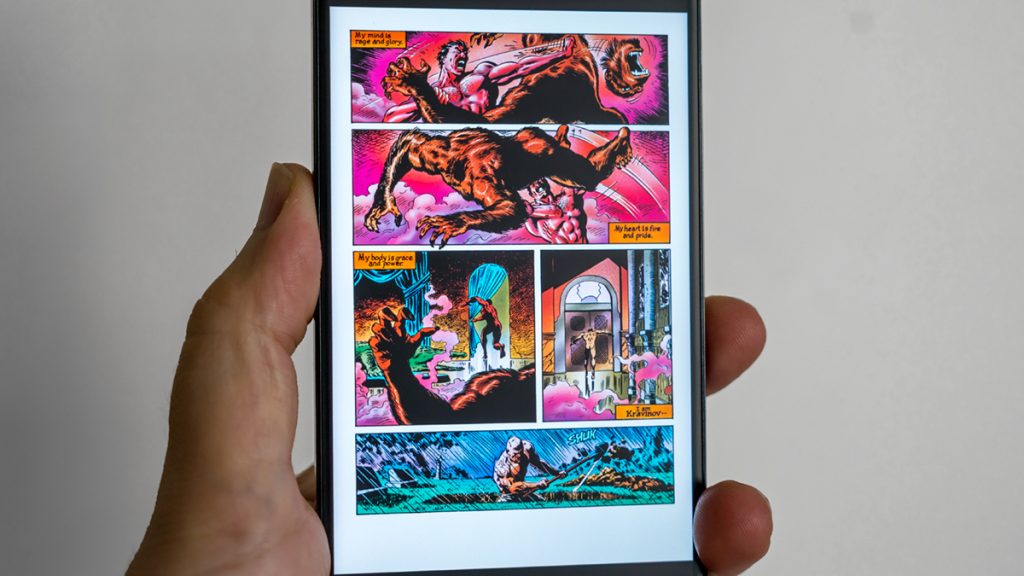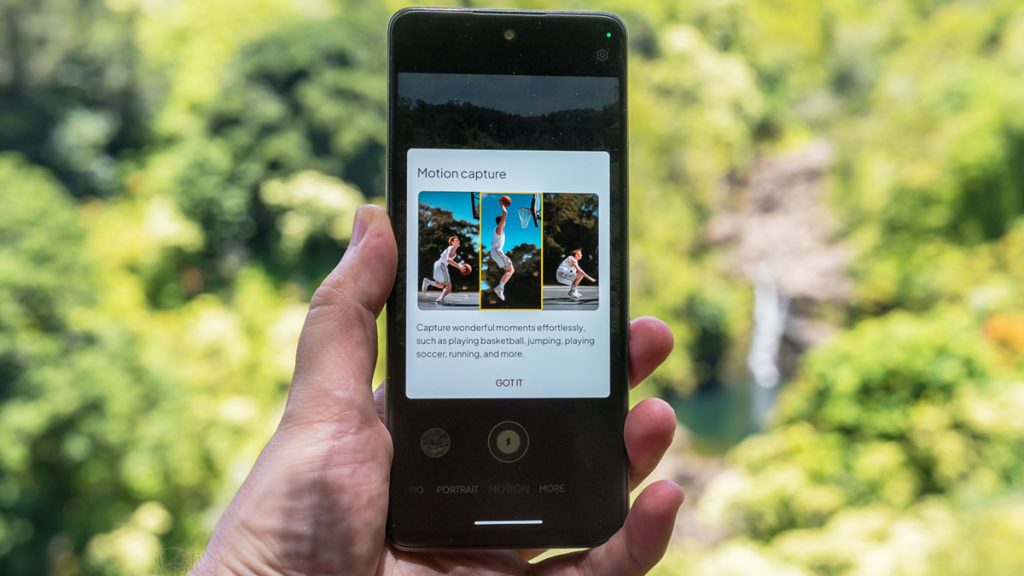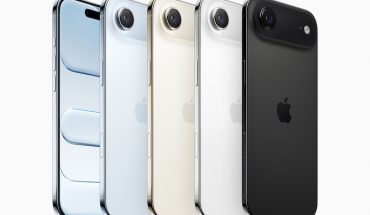TCL Nxtpaper technology is the real draw with the TCL 60 XE Nxtpaper. If not for that, this particular budget-friendly phone wouldn’t have much to outdo competitors available at a similar price. The matte, paper-like finish significantly reduces glare and filters out blue light, not only making it easier on the eyes but also standing in as a reasonable replacement for an eReader.
To add some additional incentive, TCL increases the screen size, resolution, brightness and refresh rate to make other content look better, too. Indeed, most of the changes from the previous TCL 50 XE Nxtpaper focus on the display itself, though a few supporting features help the cause.
Design and hardware
While not a massive shift, the TCL 60 XE Nxtpaper has a larger 6.78‑inch (2460 x 1080) IPS LCD screen, finally putting the lineup in 1080p territory (at least the models available in North America). It also features an enhanced anti‑glare, matte texture with adaptive brightness and color‑temperature adjustments. The brightness is notable because Nxtpaper technology can’t match the level of brightness typical of standard LCD and OLED phone screens. In this case, the standard brightness is the same 550 nits of the previous model, only this time peak brightness can hit as high as 900 nits. You’ll notice that more when watching content, like movies or shows, where brightness fluctuates within a scene itself.
TCL manages to make these improvements despite using the same underlying Nxtpaper 3.0 screen technology. A smoother 120 Hz refresh rate is great for watching content or gaming, but the colour richness and paper-like texture will generally look the same on the 60 XE Nxtpaper.
The new Nxtpaper key on the side is a quick way to switch between the three display modes: Colour Paper, Ink Paper and Max Ink. The latter two are monochrome, mimicking the look of the kind of E Ink display you’d see on a Kindle or Kobo eReader. Colour Paper is also more like the colour displays seen in more recent eReaders from those brands. Leave those modes off, and you have the rich, full colour textured look.
TCL also opts to go with the same MediaTek Dimensity 6100+ processor, only this time there is more RAM (8GB) and variants of 128GB or 256GB for storage. The SIM card slot also doubles as a microSD slot to further expand available storage.
The battery is exactly the same as its predecessor. One oddity is that while the 60 XE Nxtpaper doesn’t support wireless charging, it can do reverse wireless charging. It won’t give you much juice when placing another phone on it, but is capable of giving a boost to a pair of wireless earbuds or similar small gadgets that can charge wirelessly.
Nxtpaper as a reading option
If you’ve used a Nxtpaper device before, this section may not tell you much, but if you’re new to the technology, it’s important to understand what you’re getting into here. A good place to start is the NxtVision section (Settings > Display > NxtVision) because it’s where you can choose to enhance the contrast, colour and gaming graphics.
Since TCL includes the Nxtpaper key, the modes appear when you toggle it on rather than finding them within the Settings app or sliding down the notifications pane. It’s a convenient shortcut, and one that’s made even easier when you can just go back to the regular full colour mode by simply toggling it off. You can still go to Settings > Nxtpaper Zone to manually select the mode you want and make additional changes under Eye Care.
As is, there no dramatic difference in reading text on this device compared to the previous 50 XE Nxtpaper. You might, however, notice subtle shifts with visual content based on TCL’s adjustments to the display. At a base level, Nxtpaper 3.0 won’t offer the richness and improved colour accuracy of version 4.0, but then again, there is no TCL phone that’s available to do that as of this review. Most regular smartphones are hard to read in bright sunlight because of the glare associated with the glass panels, and less so due to any lack of brightness.
Max Ink Mode is a unique way to emulate both the look of an eReader and the battery life, too. It acts as a battery-saving mode by suspending apps outside of those you want to access, while also disabling the app drawer and cutting off notifications. You can tailor permissions to let certain notifications through, so you’re not completely out of touch, but applying the mode’s limitations means a big boost to the battery. Leave it in that mode, and you can go for up to three days of reading before you need to recharge.
E Ink displays hold an inherent advantage in that they’re easier to see in bright sunlight. If you’re catching up on a book while bathing in the sun, you’d have no real problem seeing everything onscreen with a Kindle or Kobo device. That’s not the case with this phone, where the limited brightness makes it less legible despite the screen’s matte finish.
That being said, it’s hard to make the argument that the 60 XE Nxtpaper isn’t a viable eReader alternative under any other conditions. Its screen size is comparable to the smallest eReaders, and with full colour available, media like comic books, graphic novels, children’s books and photos or video appear far richer.
Software and performance
Given this phone uses the same processor as its predecessor, performance upgrades largely come from more memory and software optimizations. The 8GB of RAM is a welcome update — made even better when taking advantage of virtual RAM to raise that to 16GB. Using the 60 XE Nxtpaper for daily use proves smooth and effective, whether it’s browsing, streaming, social media, or even playing a few games.
This phone is also rarity in that it includes a headphone jack, so if you like wired playback, that’s very doable here. Watching video gives content an interesting look that may enhance or degrade the visual effect. For example, animated shows, particularly manga and cel-shaded content, look a little more artistic because of the softer tones. A 120Hz refresh rate also doesn’t hurt when watching live action, like sports, though the lack of richer colour is obvious from the start.
TCL only offers one Android update, so once you run Android 16 on it, there will be no further updates. There are also only two years’ worth of security updates. That’s just not great at all, especially when Samsung and Google offer at least four years of both on their budget devices.
Moreover, the AI features are also restricted to the point where even Google’s Circle to Search doesn’t work at all. Instead, you settle for the basic ones developed by TCL, which are limited in scope. They’re generally focused on text, so assisting with text messages, writing, subtitles and translation. You can also record voice memos that the AI will then transcribe and summarize for you. They’re okay for a phone in this range but TCL will find it hard to compete when Samsung and Google offer more.
Camera and image quality
TCL didn’t change the rear camera system at all, so photos won’t really come out looking all that different from the previous model. To recap, that includes the main 50-megapixel camera, a 5-megapixel ultra-wide and 2-megapixel depth camera for helping with blur effects. If you want to shoot at the full 50-megapixel resolution with the main camera, you can do so by going to the settings in the top right (in the camera app) and choosing 50MP under High Pixel.
It is interesting that TCL tries to address action photography with Motion Focus mode. By and large, photos will turn out okay, though within the confines of a budget-friendly phone. If you’re simply more interested in taking snapshots than more interesting photography, this camera system may be all you need. I just feel you get much better shots by spending more on a Google Pixel 8a or 9a.
Battery life
The 5010mAh battery is also the same as the one used in the previous model, so power tells a very similar story because of it. You should have no problem getting through a full day before you need to recharge — even further if you make good use of the Ink modes. The 18W charger that comes in the box is slow by today’s standards, which is why you won’t get a really quick bump in battery life with a quick plug-in. It takes time to get back to full.
Conclusion
Budget and affordable phones tend not to have distinct features that set them apart in a significant way. The TCL 60 XE Nxtpaper looks and feels like it does simply because of that matte, paper-like screen. Not all content is going to look great on it, but a surprising amount does, and the fact this doubles as an eReader better than more expensive phones do is worth considering.
A $400 phone (when purchased outright) should have some longevity, and TCL’s limited commitment to Android and security updates casts a long shadow over using this phone long-term. It may be a good “bridge” phone — one where you knowingly use it for a limited time until something else that you want comes along. Or, you could keep it around as an eReader instead of buying one of those.

